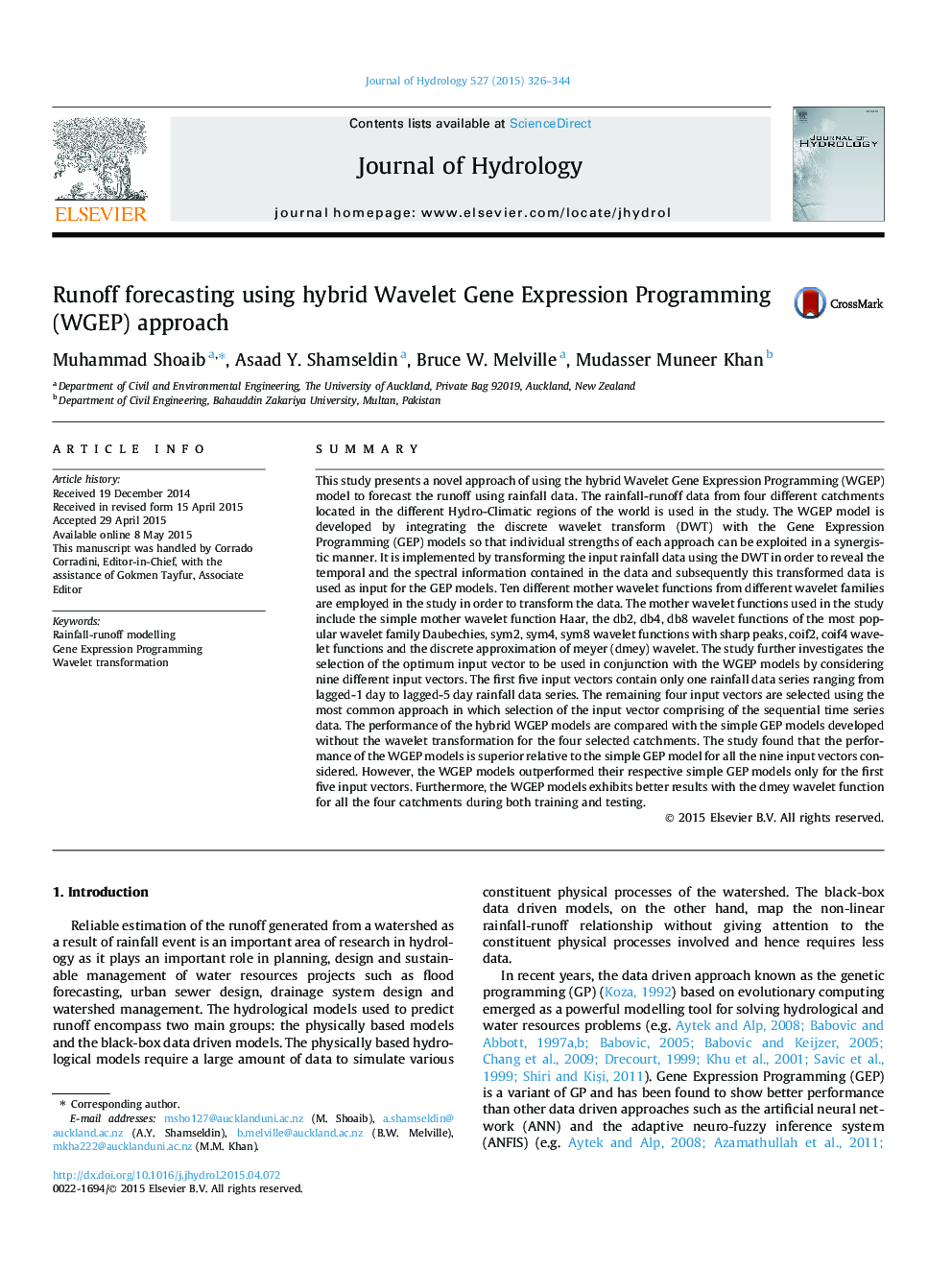| کد مقاله | کد نشریه | سال انتشار | مقاله انگلیسی | نسخه تمام متن |
|---|---|---|---|---|
| 6411088 | 1629923 | 2015 | 19 صفحه PDF | دانلود رایگان |

- Wavelet Gene Expression (WGEP) method is untaken to model rainfall-runoff process.
- dmey wavelet function did best among ten diverse wavelet functions employed.
- WGEP models outperformed their counterpart simple models.
- Nine different external input vectors are considered.
- The WGEP models outperformed with parsimonious input vector only.
SummaryThis study presents a novel approach of using the hybrid Wavelet Gene Expression Programming (WGEP) model to forecast the runoff using rainfall data. The rainfall-runoff data from four different catchments located in the different Hydro-Climatic regions of the world is used in the study. The WGEP model is developed by integrating the discrete wavelet transform (DWT) with the Gene Expression Programming (GEP) models so that individual strengths of each approach can be exploited in a synergistic manner. It is implemented by transforming the input rainfall data using the DWT in order to reveal the temporal and the spectral information contained in the data and subsequently this transformed data is used as input for the GEP models. Ten different mother wavelet functions from different wavelet families are employed in the study in order to transform the data. The mother wavelet functions used in the study include the simple mother wavelet function Haar, the db2, db4, db8 wavelet functions of the most popular wavelet family Daubechies, sym2, sym4, sym8 wavelet functions with sharp peaks, coif2, coif4 wavelet functions and the discrete approximation of meyer (dmey) wavelet. The study further investigates the selection of the optimum input vector to be used in conjunction with the WGEP models by considering nine different input vectors. The first five input vectors contain only one rainfall data series ranging from lagged-1Â day to lagged-5Â day rainfall data series. The remaining four input vectors are selected using the most common approach in which selection of the input vector comprising of the sequential time series data. The performance of the hybrid WGEP models are compared with the simple GEP models developed without the wavelet transformation for the four selected catchments. The study found that the performance of the WGEP models is superior relative to the simple GEP model for all the nine input vectors considered. However, the WGEP models outperformed their respective simple GEP models only for the first five input vectors. Furthermore, the WGEP models exhibits better results with the dmey wavelet function for all the four catchments during both training and testing.
Journal: Journal of Hydrology - Volume 527, August 2015, Pages 326-344